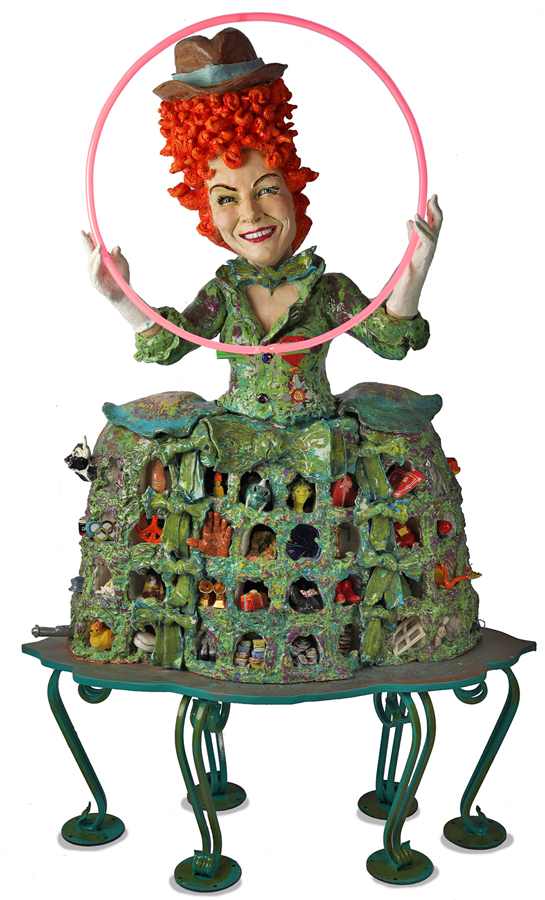“A Thousand Beautiful Things”
(Portrait of Annie Lennox)
73″ x 53″ x 23″
Ceramic, wood, found metal legs
and neon by Tesla neon
2021

For Tony, Annie Lennox is more than a musician; she is a muse. In his many studios over the years, Tony
created numerous sculptures listening to the songs of Lennox’s group, the Eurythmics, and to her performances
as a solo singer. Immersing himself in reading biographies, watching documentaries, listening to
their music, and seeing their art at museums, Tony learns everything he can about his subjects.
In this portrait, Tony represents Lennox as a noble songstress, dressed exuberantly in an exaggerated
Rococo 18th century Pannier gown with a Fedora resting atop her flame-red ringlet hair. The manly hat
denotes her musical partner in the Eurythmics, Dave Stewart, who frequently performed wearing a Fedora,
and refers to her characteristic masculine dress worn as part of the duo. Pinned to Lennox’s blouse
dangles the medal of honor presented to her in 2010 by Queen Elizabeth II, appointing the singer/songwriter
as Officer of the Order of the British Empire. The Queen bestowed this appointment to recognize
her humanitarian work fighting AIDS and poverty in Africa. Tony further draws attention to Lennox’s
advocacy by placing a circle of hot-pink neon in her white-gloved hands. Tony reveals the decisions he
made during the design process of the Lennox portrait: “I put her in a Baroque dress and hairstyle because
she always seems like royalty to me. The circle of neon represents the organization she started to
further the rights and issues of girls and women worldwide.”
What the artist does not reveal, what he leaves for the viewer to ponder, are these mysteries: the house
sculpted at the back of the portrait, and in front, the curious objects placed within the numerous nooks
carved into the singer’s skirt. Upon investigation, one can discover that the house is inspired by an exhibition,
“The House of Annie Lennox,” and symbolizes her childhood home in Scotland. The objects
placed within or protruding from the nooks are meant to identify specific events, personal attributes,
and particular songs or albums in the singer’s life.